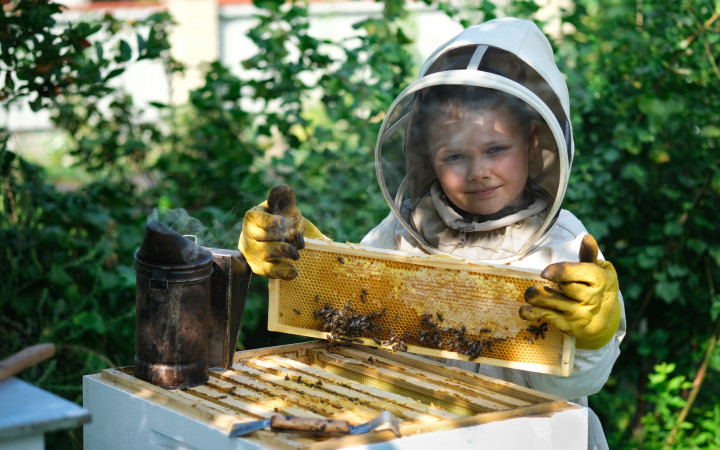Today’s Wonder of the Day was inspired by Brent. Brent Wonders, “What is causing Colony Collapse Disorder? ” Thanks for WONDERing with us, Brent!
As winter marches in and the snow falls, you might notice the world around you becomes a bit quieter. As birds migrate south, they take their songs with them. Bears start their long, silent naps. And honey bees form their winter clusters. You won’t hear their buzz buzz buzz again until the spring.
Recently, some have heard less buzzing in the spring season as well. Starting in 2006, many beekeepers reported large population losses. Some colonies lost 30-90 percent of their bees. Since then, colony failure has been between 30 and 40 percent each year.
One main cause of this is Colony Collapse Disorder (CCD). When a colony goes through CCD, most of its worker bees disappear. Plenty of food is left behind. They also leave their queen bee and baby bees. This leads to the end of the colony.
What causes CCD? Experts believe it could be several factors. They report that new diseases and pesticide poisoning could contribute. Another factor is changes to the habitat. Stress from bee management practices, such as moving the hive to a new location, may also play a part. They also think bees may leave their colonies due to poor nutrition.
But another factor may be the greatest threat to bee colonies. The Varroa mite is another possible cause of CCD. Varroa mites pass life-threatening diseases to bees. They spread from hive to hive on the bees themselves. Today, many experts call Varroa mites the largest threat to Earth’s greatest pollinators.
Why are people so worried about CCD and Varroa mites? Put simply, bees help provide humans with food. They pollinate the plants that keep the world fed. In fact, it’s estimated that bees help produce about one-third of the food people eat.
Efforts to save the bees are making an impact, though. While bee colony losses have continued since 2006, many people have taken an interest and have helped to start new bee colonies. In fact, while bee colonies continued to fail in the U.S. in 2018, so many new colonies were created that the overall number actually grew by one percent.
Still, CCD and Varroa mites pose a serious risk. How can people help the bees? One way is to plant flowers. It’s especially helpful to plant flowers native to your area. Ideally, bees would have flowers to visit all year. That’s why it’s helpful to plant a variety of flowers that bloom in different seasons. Practicing responsible use of pesticides is also important.
Many kids are afraid of the stings bees can deliver if you get too close. But remember, bees do an important job. Without bees, who would pollinate plants to grow food? During your next meal, talk about ways your family can help the bee population. Every person can make a difference!
Standards: NGSS.LS2.C, NGSS.LS2.D, NGSS.LS4.C, NGSS.LS4.D, CCRA.R.4, CCRA.L.3, CCRA.L.6, CCRA.W.2, CCRA.L.1, CCRA.L.2, CCRA.W.9, CCRA.R.1, CCRA.SL.1, CCRA.SL.2, CCRA.R.10




